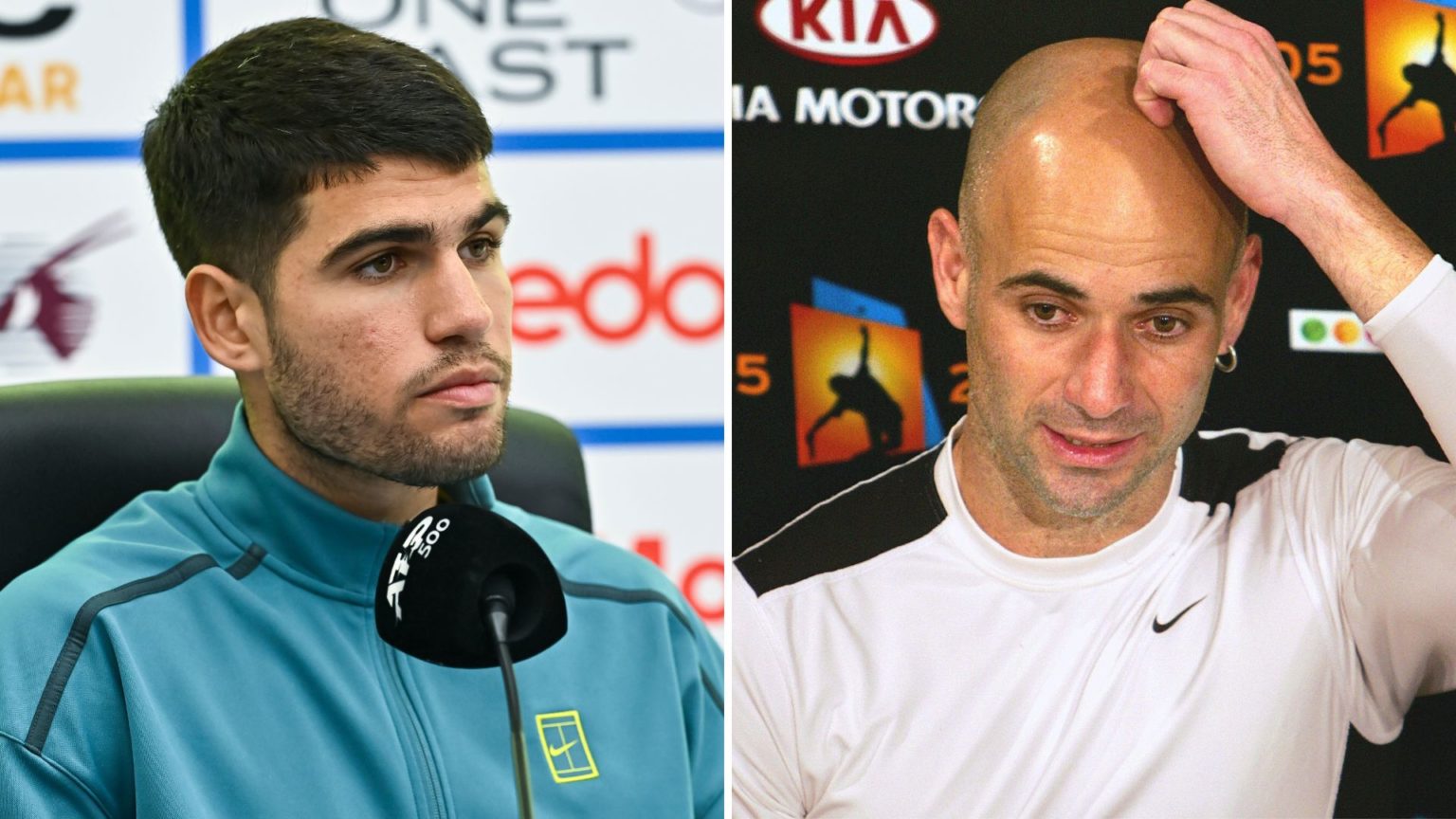
On a balmy evening in Monte Carlo, April 9, 2025, Carlos Alcaraz, the 21-year-old Spanish tennis phenom, battled his way through a shaky start at the Rolex Monte Carlo Masters, ultimately triumphing over Francisco Cerundolo with a 3-6, 6-0, 6-1 scoreline. As the clay dust settled and the crowd’s cheers echoed off the Mediterranean cliffs, Alcaraz’s victory underscored his brilliance—but it also spotlighted a lingering issue in tennis that Andre Agassi, a legend of the sport, had lamented 23 years earlier. Back in 2002, Agassi voiced frustration over the grueling physical demands and relentless schedule that left players battered and bruised, a complaint that resonates deeply with Alcaraz today as he navigates the modern game’s unyielding pressures.
Agassi’s words from that era painted a vivid picture of a sport that chewed up its stars and spat them out. “The schedule is brutal—it’s a year-round grind that doesn’t give you time to recover or breathe,” he’d said, his voice heavy with the exhaustion of a man who’d won eight Grand Slams but felt the toll of every mile traveled and every match played. Fast forward to 2025, and Alcaraz, despite his youth and meteoric rise—four Grand Slams by age 21, including last year’s French Open—finds himself wrestling with the same beast. After his Monte Carlo win, he didn’t shy away from hinting at the strain. “I didn’t start well. I made a lot of mistakes,” he admitted, reflecting on a first set where fatigue from a packed season seemed to dull his usually electric game. For a player who thrives on clay, the surface he calls home, that stumble was a glaring sign of the toll the calendar takes.
The modern tennis schedule is a relentless marathon—11 months of globe-trotting tournaments, from Melbourne’s scorching hard courts to the clay of Paris and beyond. Alcaraz’s 2025 has been no exception. After defending his Australian Open title in January, he’s crisscrossed continents, racking up wins but also weariness. A Rotterdam title in February was a high, but losses in Indian Wells and Miami hinted at cracks in his armor. “It’s tough when your body doesn’t cooperate, but it teaches you to fight harder,” he’s said earlier this year, echoing Agassi’s sentiment about the physical grind. In Monte Carlo, his early errors against Cerundolo—ceding control as the Argentine dictated points—were a stark reminder that even a prodigy isn’t immune to the exhaustion Agassi decried.
Yet, Alcaraz’s response was pure champion. Down a set, he flipped the switch, unveiling the adjustment that turned the match around. “I knew I had to do something else, play more aggressively, and play my own tennis: drop shots, going to the net, and more aggression,” he explained, detailing how he stepped closer to the baseline and boosted his return game to wrest dominance back. The result was a 12-1 game surge across the final two sets, a testament to his resilience. “The most important change was the return; I tried to return closer to the line and push him,” he added, pinpointing the tactical shift that silenced Cerundolo’s challenge. It was vintage Alcaraz—drop shots skimming the net, forehands screaming past opponents—but it came after a battle against his own fatigue, a fight Agassi knew all too well.
The issue Agassi raised isn’t just a relic of the past; it’s a modern epidemic. Players today face an even denser calendar, with expanded Masters 1000 events and lucrative exhibitions piling onto the traditional slams and tour stops. For Alcaraz, the No. 3-ranked player chasing Jannik Sinner’s top spot, the pressure to perform week in, week out is relentless. His Monte Carlo win—his first at the event after missing last year due to injury—offers no respite; he’s straight into a third-round clash with Daniel Altmaier, with Barcelona, Madrid, and Rome looming. “I missed clay,” he scribbled on the camera lens post-match, a love letter to the surface, but also a subtle plea for a moment to savor it without the grind wearing him down.
Agassi’s complaint, voiced when Alcaraz was barely a toddler, lingers as a shadow over tennis’s brightest star. The sport’s governing bodies have tinkered with rest periods and injury timeouts, but the core problem persists—a schedule that demands superhuman endurance. For Alcaraz, it’s a double-edged sword: his youth fuels his brilliance, but the miles he’s logging threaten to sap it. As he strides deeper into the clay season, eyes on a Roland Garros repeat, the question looms: can he defy the grind Agassi couldn’t escape, or will tennis’s brutal rhythm claim another prodigy too soon? For now, his Monte Carlo fightback is a defiant answer—a spark of hope amid a challenge as old as the game itself.
Leave a Reply